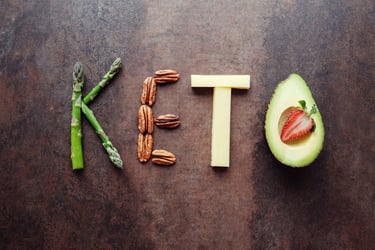eStoreRx™
Online Supplement Dispensary
eStoreRx™ is an easy direct-to-patient ordering & fulfilment program for lifelong wellness.
For over 40 years, Biotics Research Corporation has revolutionized the nutritional supplement industry by utilizing “The Best of Science and Nature”. Combining nature’s principles with scientific ingenuity, our products magnify the nutritional
eStoreRx™ is an easy direct-to-patient ordering & fulfilment program for lifelong wellness.
Biotics Research is proud to expand our commitment to education with the Wellness Unfiltered Pro Podcast. Each episode delves into key health topics and the clinical applications of our premier products. Through candid, insightful conversations, our team offers practical guidance to keep you informed and empowered as a healthcare professional.
December 16 2025
A three-year parallel-group trial, known as Prevención con Dieta Mediterránea-Plus (PREDIMED-Plus), details the results of a secondary analysis of a r...
 In last week’s blog article, we addressed some common myths about ketogenic diets. There’s no shortage of these to discuss, so today let’s look at three more, including concern regarding the potential for ketoacidosis.
In last week’s blog article, we addressed some common myths about ketogenic diets. There’s no shortage of these to discuss, so today let’s look at three more, including concern regarding the potential for ketoacidosis.
1. Keto is expensive.
To the contrary, some people find that their food budget decreases after going keto. As stated above, keto doesn’t have to be high-tech to be effective. People can get their desired results without buying anything they weren’t buying before. Despite the valiant marketing efforts behind them, neither exogenous ketones nor MCT oil are required (although these may be helpful in specific situations). Individuals who adopt a ketogenic diet were likely buying some combination of meats, vegetables, eggs, berries, dairy products, and nuts and seeds on their usual higher-carb diet. Those are keto-compliant, and when someone cuts carbs, several things come off the shopping list. Money no longer needs to be spent on bread, pasta, bagels, rice, beans, cereal, and other foods high in starch or sugar.
2. You have to eat a lot of meat.
Here again social media can be misleading. Steaks topped with steaks with a side of bun-less burger patties might be a common sight on some keto accounts, but this way of eating doesn’t have to be meat-heavy. Keto dieters can get quality proteins and nutrients from poultry, seafood, and eggs if they prefer. It’s even possible to do keto as a vegetarian and get protein from eggs and dairy products. (A fully plant-based keto diet is also possible, although use of protein powders such as pea or rice or synthetic meat products made from these may be needed, since vegan protein sources—such as beans—are typically high in carbohydrates.)
3. Ketosis is dangerous.
One of the biggest misconceptions standing in the way of ketogenic diets being more widely recommended by healthcare professionals is confusion between nutritional ketosis and diabetic ketoacidosis (DKA). These are not the same things. There are three major differences between ketoacidosis and nutritional ketosis:
When concerns are addressed and fears allayed, people may feel more confident in giving keto a try. It’s certainly not the only way to lose weight or improve health, but it has an impressive track record for both.
Related Biotics Research Products:
Submit this form and you'll receive our latest news and updates.
Keto diets are perhaps most popular for weight loss, but a growing body of research as well as increasing numbers of pat...
Learn moreSocial media is replete with astounding before and after pictures of lives transformed by weight loss on ketogenic diets...
Learn more“Research increasingly shows that strongly limiting dietary carbohydrate can have a profound effect on improving quality...
Learn more
*These statements have not been evaluated by the Food and Drug Administration. This product has not intended to diagnose, treat, cure, or prevent any disease.
Proposition 65 Warning
© 2025 Biotics Research Corporation - All Rights Reserved
Submit your comment